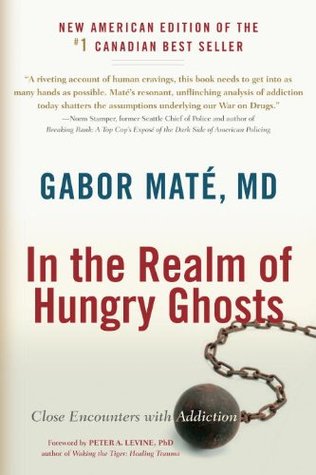More on this book
Community
Kindle Notes & Highlights
by
Gabor Maté
Read between
September 11, 2024 - February 23, 2025
So there are two ways of promoting healthy brain development, and both are essential to the healing of addiction: by changing the external environment and by modifying the internal one.
The mental activity most critical to the development of emotional self-regulation has been called “dispassionate self-observation” by the authors of an important article on the interface of brain and mind, published in the Philosophical Transactions of the Royal Society (Biological Sciences) in 2005. “The way in which a person directs their attention (i.e., mindfully or unmindfully) will,” they write, “affect both the experiential state of the person and the state of his/her brain.”
“Addiction is running from reality,” a patient of mine once said, “the reality you have that something is stronger. Something that’s greater than you. Instead of admitting it and saying that something scares me—this thing scares me, or I don’t know how to do this, or I don’t know how to live—instead of just saying that, you do drugs. So you coexist with the people that are nonexistent. People are just surviving but not living.”
According to the psychologist and memory researcher Daniel Schacter, implicit memory is active “when people are influenced by past experience without any awareness that they are remembering.… If we are unaware that something is influencing our behavior, there is little we can do to understand or counteract it. The subtle, virtually undetectable nature of implicit memory is one reason it can have powerful effects on our mental lives.”
“Sire, you are mortal.” Life finds ways of delivering those messages just when we most need them. Susan had done me the favor of reminding me what my reality was in the absence of sobriety and integrity.
Addiction is primarily about the self, about the unconscious, insecure self that at every moment considers only its own immediate desires—and believes that it must behave that way. In all cases the process arises from the unmet needs of the helpless young child for whom this constant self-obsession appears, to begin with, as a matter of survival. That he cannot rely on the nurturing environment becomes his core myth. No such environment even exists—or so he has come to believe in his bones and in his heart, which were parched by early loss.
The mind of the addict is beset by constant worry and soothed only by the addictive substance or activity. The hunger and the urgent drive to satisfy it are ever present, regardless of circumstances. My family has remarked that when I eat, unless I take particular care, my habit is to bend low over the plate and shovel the food into my mouth as if it’s about to disappear.
Once programmed, the addicted mind creates a world of emptiness where one must scratch and grab for every bit of nourishment and be ever vigilant for every opportunity to get more. The addict hasn’t grown out of the stage of infancy that has been called the narcissistic phase, the period when the fledgling human being believes that everything happens because of her, to her, and for her. Her own selfish needs are her only point of reference. We move through stages of development when the needs we have in each are fully satisfied. Then the brain can let go. The addicted mind never lets go.
Music without guilt—a revelation. My advice to anyone with addictive behaviors is to begin telling the truth. If you are not ready to drop the behavior, then choose it openly. Tell your spouse or friends what you are doing; keep it in the daylight. At the very least, do not compound your inner shame by lying. Better you should look “bad” in the eyes of others than to sink further in your own estimation of yourself.
Stress is a major trigger for substance abuse and other addictive behaviors and is the most predictable trigger for relapse. • Stress hormones can themselves become addictive.
We may also take on chronic stresses because of ingrained beliefs of how we “ought” to be. Some people, for example, may find themselves unable to say no to work demands or the emotional expectations of their spouse, adult children, or family of origin. Something has to give—and what gives, if not our physical health, is our mood or peace of mind. Addiction comes along as an “antidote.”


